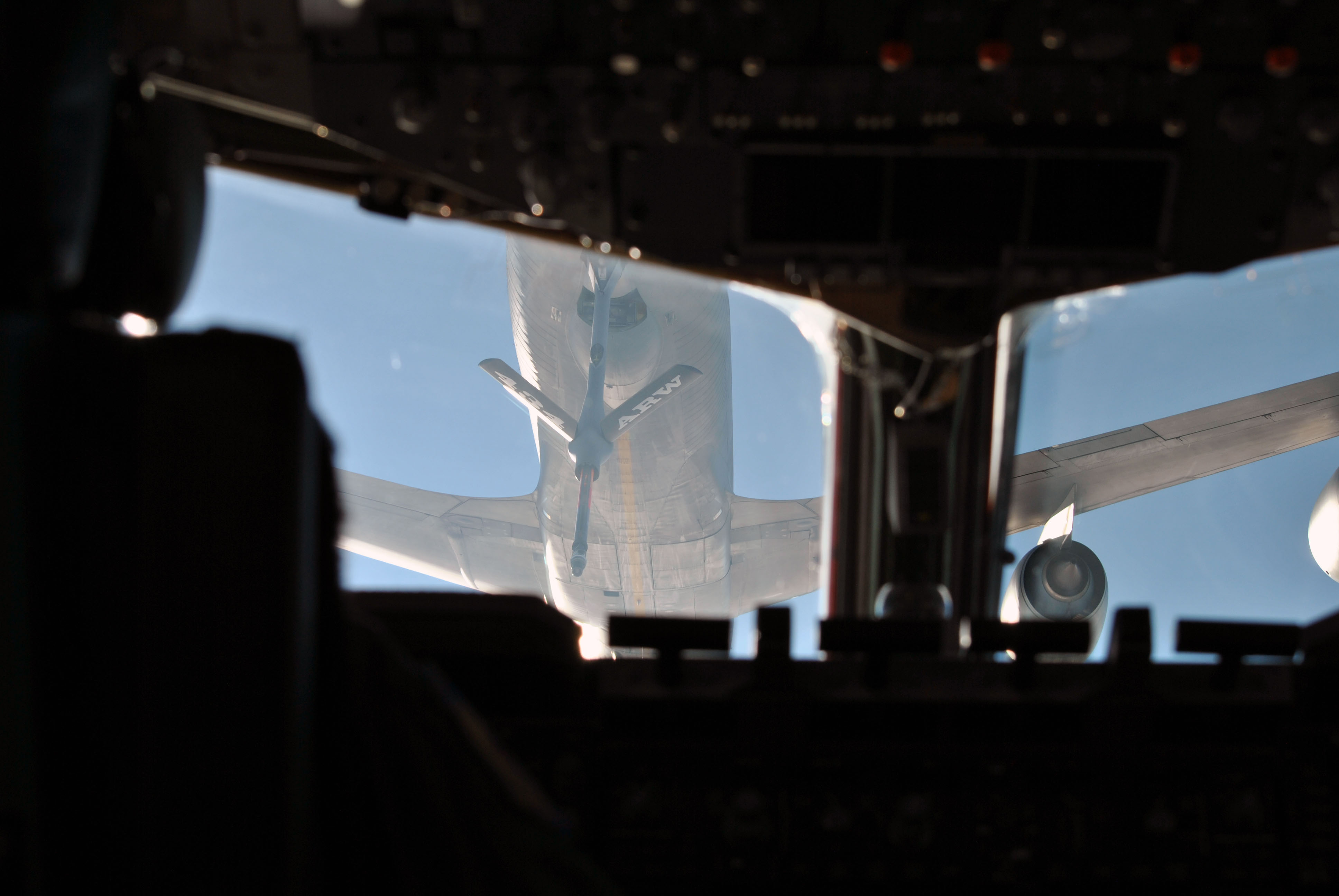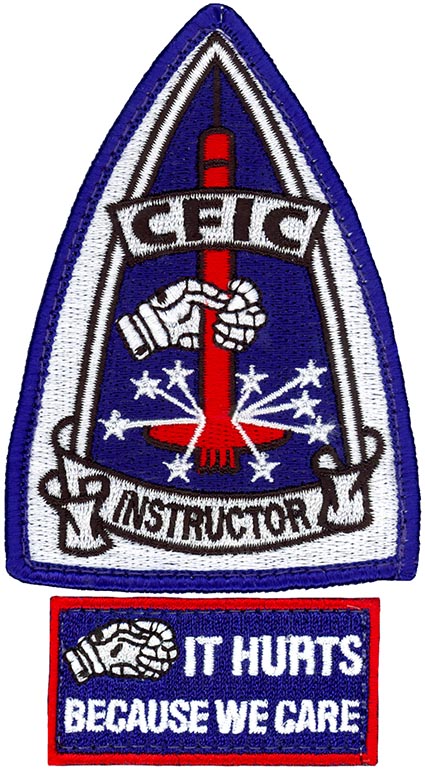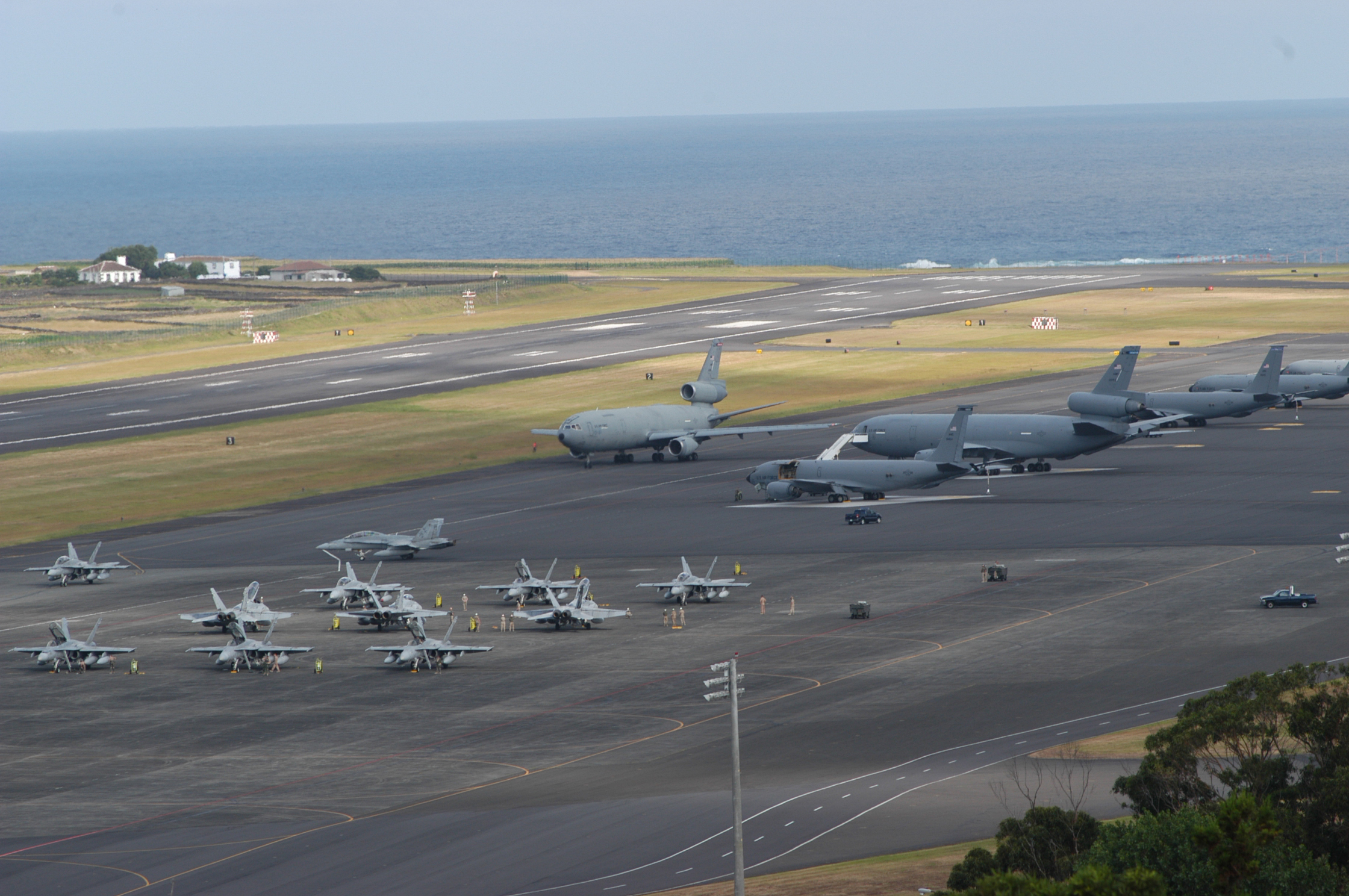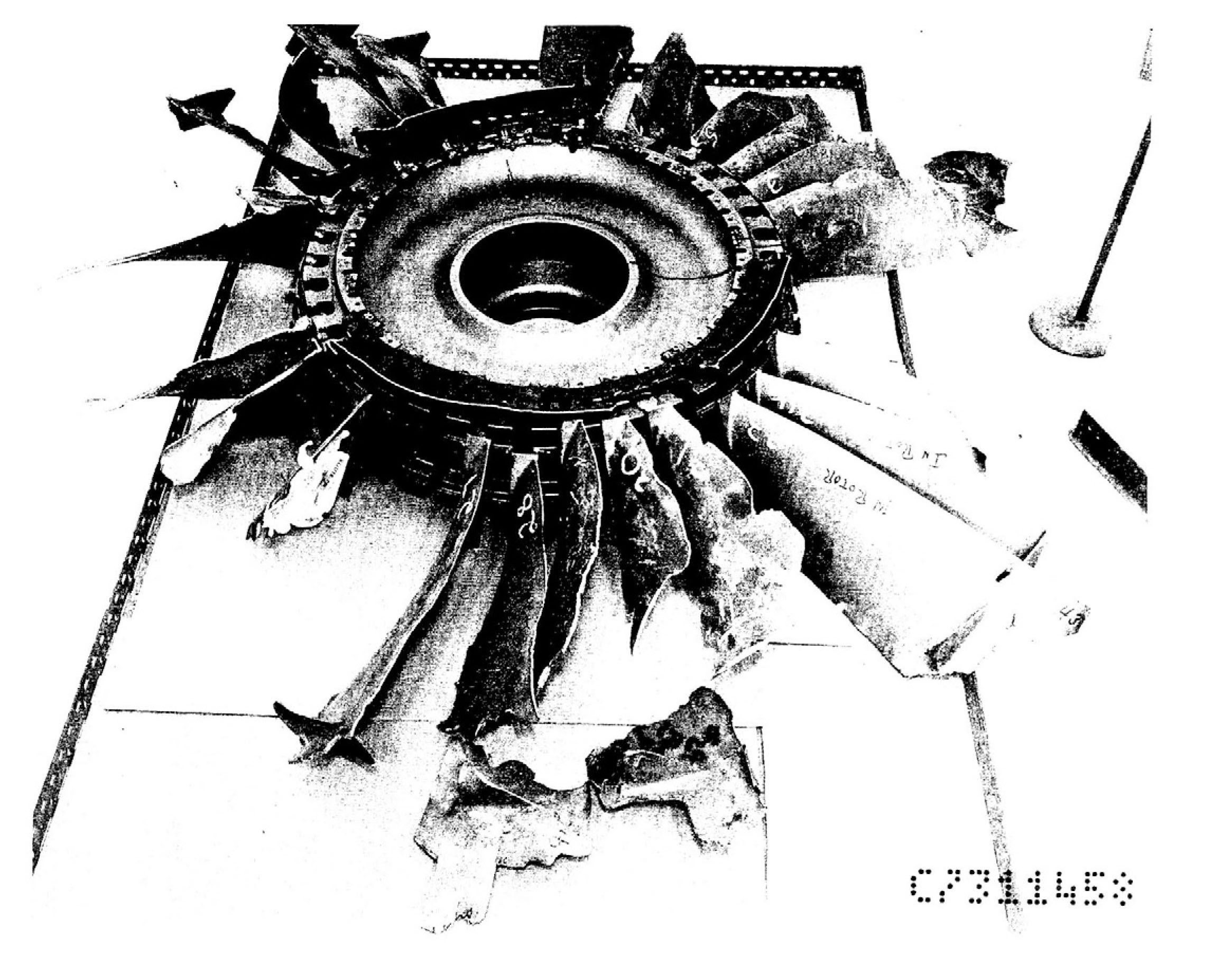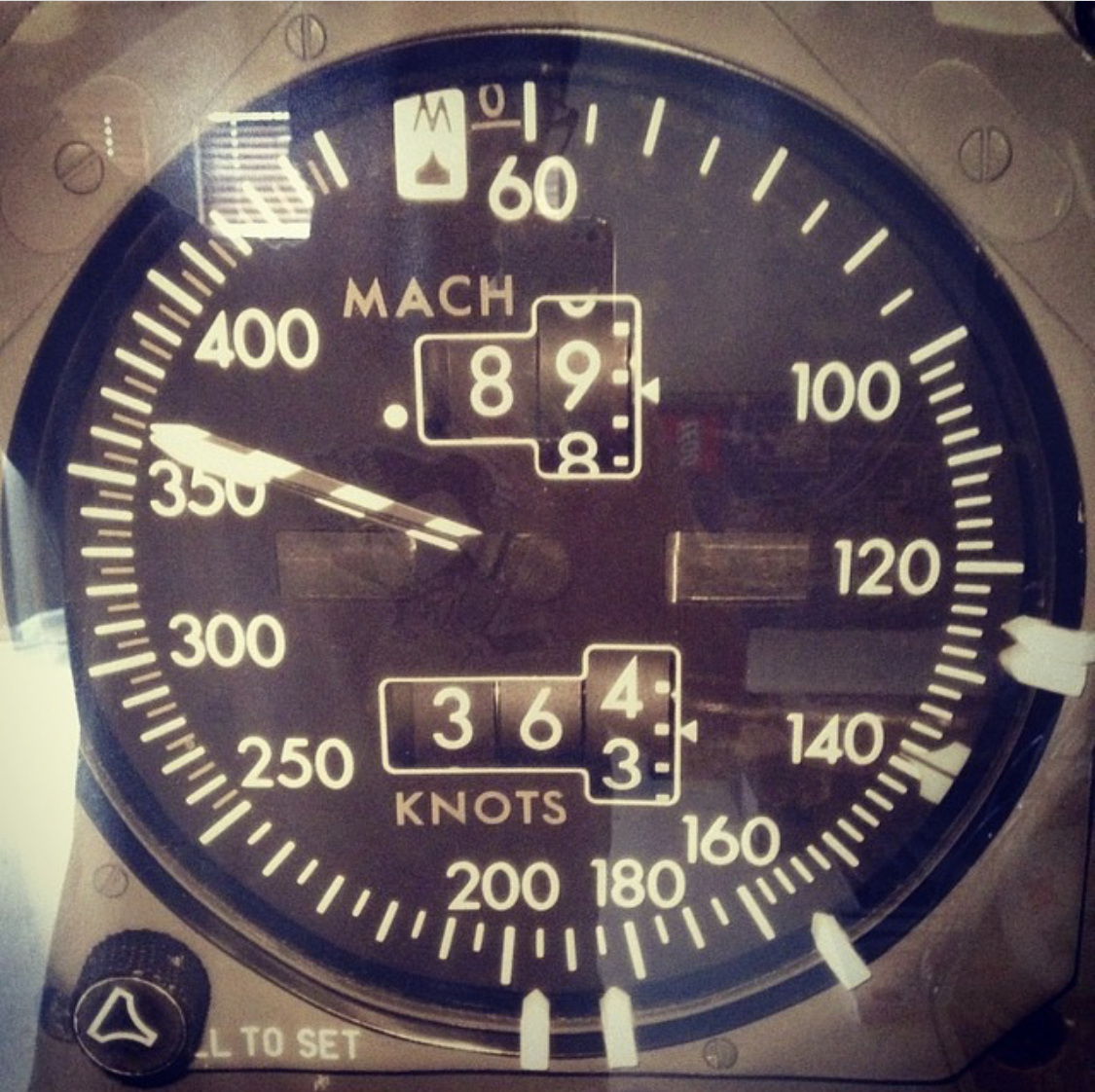In 1995 my job was as a functional check pilot flying the Boeing 747 (E-4B). I had flown as a functional check pilot once before in the Boeing 707 (EC-135J) and would have the duties again in the Gulfstream III (C-20A, C-20B). My boss in the 747 squadron would introduce me as "our test pilot," and I would have to correct him each time. An Air Force functional check pilot flies according to very strict rules and even when testing something, there is a very detailed manual to follow. We never did anything that we hadn't carefully studied ahead of time.
— James Albright

Updated:
2021-01-15
Over the years before and since those duties, I have been witness to pilots saying, "I wonder what would happen if," and then go on to find out. Those are good pilots to avoid.
1 — Air refueling envelope limits
2 — The dreaded three-Eengine out approach
3 — Demonstrating a new crosswind limit

1
Air refueling envelope limits
One of the more challenging things I've ever had to do in an airplane has been to fly a 300,000 or 800,000 pound aircraft behind another aircraft, make physical contact, and take on up to 300,000 lbs of fuel while flying at 25,000 or so feet. I've heard this is a nonevent for most fighter aircraft, but in a large aircraft you are dealing with a great deal of inertia and the interaction of air flow between aircraft.
Of particular note is the fact the ailerons do not behave as you would expect. You don't have to keep the airplane exactly centered, but the envelope isn't very large: between 6 and 18 feet of boom extension, 10 degrees left and right azimuth, and 20 and 40 degrees of elevation. Keeping the airplane in the center of that envelope is a science, instructing a student how to do this is an art.
As I was learning to air refuel as a receiver pilot in the Boeing 707 (EC-135J), the instructors would fly the aircraft perfectly centered and radio the boom operator, "moving eight left." The boom operator would "roger" that and the instructor would expertly move the aircraft to 8 degrees left and hold it there, while telling me what the visual cues were. I remember thinking I needed to learn to keep the airplane centered and all those visual cues with the airplane not centered were meaningless. But I eventually got checked out.
After a year or so as an aircraft commander, our squadron hired a new batch of instructors who would demonstrate an upper limit ("moving up 22"), hold that but then not return to center, ("moving aft 16"), and then right, ("moving right 8"). The first time I witnessed this I was alarmed by the fact the boom had actually taken on a curve. "That can't be good," I said. "We are in the limit," the instructor said, "you will have to do this if you upgrade to instructor." He emphasized the word "if."
I was selected to upgrade and learned that while instructors did have to know the visual cues for each limit and had to demonstrate the ability to fly to each limit and hold it there, the book clearly said it was to be done one limit at a time. But our squadron commander said I could either get with the program or he would pull my upgrade orders. I rather sheepishly got with the program.
A year or so later I was in the jumpseat as another instructor pilot was in the left seat and a brand new copilot was in the right seat. Our tanker was from the Air National Guard. The instructor told the boom operator "moving down 38," got his "roger," and moved the airplane down. He then said, "moving aft 16," at which point the boom operator toggled the boom to disconnect, raised the boom and stowed it. "Is there a problem?" our pilot asked. The boom operator's voice was replaced by his pilot's. "Unlike you active duty types, we like to take care of our equipment. We heard about your outfit's triple limits and the damage that causes to our booms. You can either fly by the rules or we'll take our business elsewhere."
Adding insult to injury, our pilot said, "I guess we are done then." He pulled back all four throttles and our training for the day was over. Our squadron called all our instructors to discuss this and the result was a bit of sanity I wasn't expecting. Our commander said the guard tanker crew was right. There would be no more triple limits.
2
The dreaded three-engine out approach
Right about the time I was learning the importance of refusing to do things just because someone I reported to wanted to, I was being considered for test pilot school and for duty flying Boeing 747s. The problem, both units told me, was that I had never graduated from a formal instructor pilot school. Our EC-135J squadron did these upgrades locally. So I got them to pull a few strings and found myself at the KC-135 Central Flight Instructor Course (CFIC), also known as "See If I Care." That disparagement was especially apropos for me since I was already an instructor pilot and that it was in an airplane I wasn't responsible for knowing.
I was paired with a real KC-135A pilot who needed every minute of instruction, so our CFIC instructor signed me off on sortie two and promised to give me two takeoffs and landings on each of the eight remaining sorties. On one of those sorties, after pulling engine Number 1 to idle on the runway during a touch and go (not allowed), and watching me add rudder, rotate and climb, my CFIC instructor pulled engine Number 2 just as I reached pattern altitude. "Is this legal?" I asked. "I only do this to my strongest students," he said, "you should be flattered." I thought about that for a while and did my best instructing the abnormal procedure as if it were only abnormal. I made note of the fact that with only two engines we might have difficulty maintaining altitude and speed with the gear extended, so I would withhold it until starting down. Turning base, I asked for the landing gear and started a gentle descent and then for the last notch of flaps. I probably should have waited on the flaps.
"If you lost the third engine right now," my instructor asked, "would you be able to make the runway?"
"I don't know," I said.
"Let's find out," he said while pulling Number 3 to idle.
I added more right rudder and pushed Number 4 to the maximum continuous thrust allowed. Still the speed decayed. I started to worry about engine spool up time and debated retracting the flaps while pushing the three idled engines forward. My instructor pushed Number 4 higher to its takeoff limit. The speed stabilized and I thought about looking at the engine instruments but was too busy landing the airplane. "See," the instructor said after I landed, "no problem." I pushed all four throttles to mid-range, reset our flaps and trim, and then pushed all four engines to their takeoff setting.
Just then I heard a loud explosion from the right and felt the aircraft yaw. I added left rudder and rotated. Once we got the gear retracted I looked down to see the engine tachometer seized at 0% RPM and all of the other gages on that engine south of where they should have been. The aircraft had a mild tremor to it. We limped home, landed and reported to maintenance debrief. The CFIC instructor wrote up the engine, saying it seized for an unknown reason. "I know the reason," I said.
"You aren't a qualified KC-135A pilot and have no input here," he said.
3
Demonstrating a new crosswind limit
I can't explain why, but whenever I go to Lajes Field the winds are gusting to 40 knots. Most of the time it was 40 knots generally aligned with the runway but once it wasn't. I was in the right seat of an Air Force Gulfstream III with a U.S. Ambassador and his family seated behind us. We were en route to Ghana for the inauguration of its new President, Jerry Rawlings. He had been the military ruler since 1981, when he led a coup d'état against the country's elected president. But now Flight Lieutenant Rawlings wanted to become President Rawlings, and we were on our way to see him.
I was a new copilot at the 89th Airlift Wing at Andrews Air Force Base, being considered for upgrade to aircraft commander. The pilot doing the considering was flying the first leg and the winds were a direct cross at 40 knots. "We have the fuel to make Lisbon," I said. "We aren't going to Lisbon," he said. "Lajes is just a fuel stop," I said "and the winds are out of our limits." "We don't have limits," he said.
And that was sort of true. Gulfstream had a "demonstrated crosswind" we could hang our hat on, and in the civilian world that's all you had. But the 89th decided that the demonstrated value was too low and said we could go to 30 knots. "Forty is more than thirty," I said helpfully, in case my evaluator had forgotten base-ten math.
"Funny," he said. "I shall demonstrate a new limit to you."
And he did. So I know that a Gulfstream III can, under those particular conditions, land in a 40-knot crosswind. I wonder how the Ambassador and his family would react to being guinea pigs in an amateur test pilot's airplane?
4
I wonder if . . .
Imagine yourself flying as a passenger on a name brand airline when one of the cockpit crewmembers up front says to another, "I wonder if . . ." and then talks about pulling circuit breakers to see if it will impact the way the airplane is flying. Imagine. This was way back in 1973, before I gave any thoughts to becoming a pilot. I thought anyone who was a professional pilot had rigorous training, knew their aircraft nose to tail, and had the discipline to avoid doing anything in the cockpit unless they were confident about the outcome. How naive that belief was!
This particular crew was flying from Houston to Las Vegas but they never got there. Halfway there, the flight engineer says, "wonder if you pull the N1 tach will that, autothrottles respond to N1?"
To which the captain said, "Gee, I don't know."
One or the other said, "You want to try it and see?"
At this point the correct answer was, "No, I do not." Or, "Let's wait until our next simulator." But instead it was "sure, let's see here."
They pulled the circuit breakers and somehow in the ensuing moments, the number 3 engine exceeded limitations and for reasons the NTSB says could not be determined, the engine tore itself apart. One of the fan blades broke a cabin window frame and the passenger seated nearby was blown out. The airplane lost pressure and the crew executed an emergency descent and landing. The passenger was never found.
I found the NTSB report to be exasperating but they let the cat out of the bag with their final recommendation:
With regard to the flightcrew's performing an untested failure analysis of the autothrottle/speed control system, the Safety Board stresses that the operator and the pilot-in-command should be fully cognizant of their operational responsibilities to conduct the flight in a professional manner and not to conduct experiments to aircraft systems in which they have not received specific training or instruction.
More about this: Case Study: National Airlines 27.
5
Two experiments, two different outcomes
In 2002 I was flying a Challenger 604 based out of Houston Intercontinental Airport with a new hire pilot, one who had lots of experience in the airplane flying for a competitor, but all of that as a first officer. We were considering making him a captain and he was making a good first impression. We had an easy out and back day trip trip to Dallas Fort Worth, dropping a passenger and coming back empty. I noticed some commotion at the American Airlines ramp, but it didn't impact us so we were on our way without delay.
I had the new guy in the left seat and the weather was fantastic. Just prior to starting our descent, he sprang this on me: "You mind if I try a no flap?"
"I do mind," I said. "You do those in the simulator."
"I heard you did one last week going into Washington National," he said.
"I had no choice, the flaps wouldn't extend," I said. "The torque limiter had seized. We don't practice emergency procedures in the airplane."
"But it isn't a big deal," he said.
"I can land the airplane from the right seat if you prefer," I said. Of course he did not prefer.
I have a friend who was flying MD-82s based out of DFW at the time and the next week I called him to ask about the commotion the day of our out and back. His answer said it all. "It was stupid pilot tricks day," he said.
He explained that they normally shut an engine down after landing and taxied in with one to save fuel. On that day one of the first officers asked the captain if shutting the engine down with the fire switch did the same thing as the normally used fuel switch. "It does," the captain said. "Why don't you prove that right now?"
"Cool!" said the first officer. He pulled the fire switch and the engine shut down as expected. Once that was done, the captain said, "Better push that switch back in, we don't want to confuse anyone." The first officer did as instructed and since the fuel switch was still on, raw fuel poured back into the hot engine. The engine blew itself right off the pylon. That must have been the cloud of smoke that I saw that day.
"What's going to happen to the pilots?" I asked.
"Nothing," my friend said. "The union has their backs."
6
The secret to a long career as a pilot
This might seem odd coming from a career Air Force pilot turned civilian, but the missing ingredient in many failed pilots is humility. Besides the few examples I've given here, I've heard pilots say that experimenting with the airplane in flight will teach you more about the airplane than any classroom or simulator. "We know what we are doing!" "What can go wrong?"
The Case Studies Library is filled with accidents where the pilots, sometimes with good intentions, thought they had it all figured out and "stretched the envelope" of their aircraft beyond the limits given to them by the people who built the airplane. For example:
- Aérospatiale SN-601 Corvette N600RA — Attempt to takeoff while starting an engine
- Alaska Airlines 261 — Attempt to re-engage the autopilot with a jammed stabilizer
- Gulfstream GIV N121JM — Attempt to takeoff with gust lock engaged and deactivating flight control system in an attempt to disengage it
- Trans World Airlines 841 — Attempt to increase speed by pulling leading edge slat circuit breakers while extending trailing edge flaps
I've experienced several things in airplanes that took the manufacturer by surprise. If they didn't see it coming, what chance do I have?
My favorite thought on this subject comes from one of my favorite flight safety officers, David Huntzinger:
"Known procedures produce known outcomes."
None of us are as smart as we think we are. We need to stick to the script when we can.
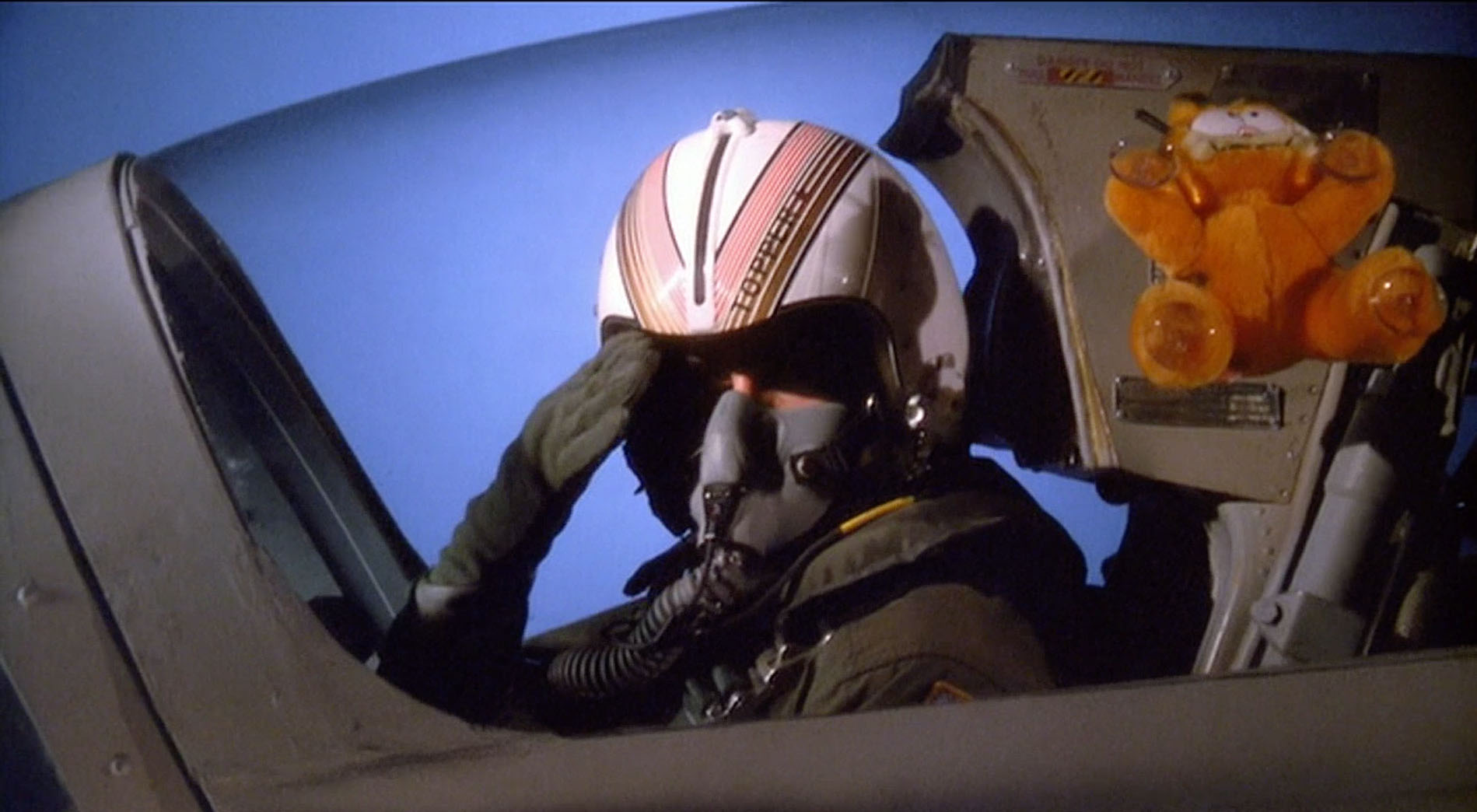
a-1_figure_4-54.jpg)
